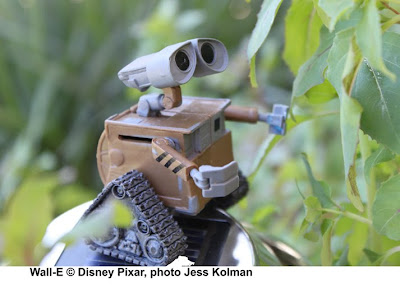For the last week or so I’ve had a new garden buddy. Seems my almost-middle-aged cat has got himself a bad case of spring fever, so I’ve been letting him come out with me and help trim the grasses—and call my planting choices into question. I’m in the cat-guardian camp that believes the danger of being flattened by a car or carried off by a coyote is too great for free-range kitties, so I keep mine inside, but Neo has always tortured my conscience with his howls to go out. In the past we’d try the leash thing and he’d spend the whole time trying to Houdini out of the harness, but he seems to be mellowing with age. I love having him around and I envision a time where he can chew on Festuca rubra and Koeleria macrantha to his tummy’s content while I do some weeding or sit in the sun and read a book.
All this is very good, except that it's got me regretting my back yard planting design choices. A spring-flower-filled meadow that would fade to tan as the summer wore on seemed too pretty to resist, despite my own objections that it might create a rattlesnake hazard. (They don’t invent expressions like “snake in the grass” for nothing, you know!) We live in a fairly rattlesnake-heavy area, and every spring and summer we see a handful in the yard. They like to relax under cool plant cover on hot summer days. The ivy was total snakeville, so I knew better than to create a similar situation.
And yet here and I am with a dense meadow patch. The idea was to replace our small lawn with drought-tolerant grasses that would be extravagantly colored by the blooms of Sisyrinchium bellum, Linum lewisii, Linanthus grandiflorus and Silene laciniata, as well as bulbs like Allium and Triteleia. This is coming along pretty well, though the Silene seemed to disappear. But what I have most of this year is Gilia capitata. My meadow is only a year old and wouldn’t be very dense yet, except for that impenetrable forest of Gilia.
 This grass-and-Gilia patch that I’m seeing as a little dangerous is, naturally, the cat's favorite spot. He retreats to it every time something spooks him and I’ve dubbed it Homegrass, in reference to Hometree in Avatar.
This grass-and-Gilia patch that I’m seeing as a little dangerous is, naturally, the cat's favorite spot. He retreats to it every time something spooks him and I’ve dubbed it Homegrass, in reference to Hometree in Avatar.So now I have to decide: 1) pull out the Gilia so that there is enough visible soil to spot snakies, or 2) prohibit cat use in that area till after blooming, then cut it all down with a weed-whacker. I have a feeling the cat in question is going to exercise his veto power on option 2. So far I’ve just been giving the area a visual inspection by parting the Gilia forest, but because many rattlers this time of year are babies and therefore small and rattle-less, I suspect they could go undetected. (By they way, I’m not against the snakes in principle—it was their home before it was mine—I just don’t want them biting my little friend of friends.)
 Next year I will resolve to not let the Gilias run amok, and I’m kind of thinking of making Yarrow (Achillea millefolium) the backbone of the meadow. I have it elsewhere and so far, it doesn’t have stalks at all, but is just a nice, low turf-like cover. Maybe when it gets its stalks it’ll cause the same situation, but I’m wondering if it would be less dense, and therefore easier to peer into.
Next year I will resolve to not let the Gilias run amok, and I’m kind of thinking of making Yarrow (Achillea millefolium) the backbone of the meadow. I have it elsewhere and so far, it doesn’t have stalks at all, but is just a nice, low turf-like cover. Maybe when it gets its stalks it’ll cause the same situation, but I’m wondering if it would be less dense, and therefore easier to peer into. I do enjoy Yarrow, though find it needs a bit more water than I’d planned on giving. Yarrow is sort of a mascot in my yard though, because I have this memory of my mom buying some and my sister laughing at the purchase because “you can just find it growing in the wild.” Yes—and that pretty much encapsulates my whole garden ethos now.
Well, rainy week, so no need to decide right away what do with the meadow. My new garden buddy doesn’t ask to go out if it’s as much as drizzling. It’s probably worth modifying my meadow for him. He's better company than my old gardening buddy:







